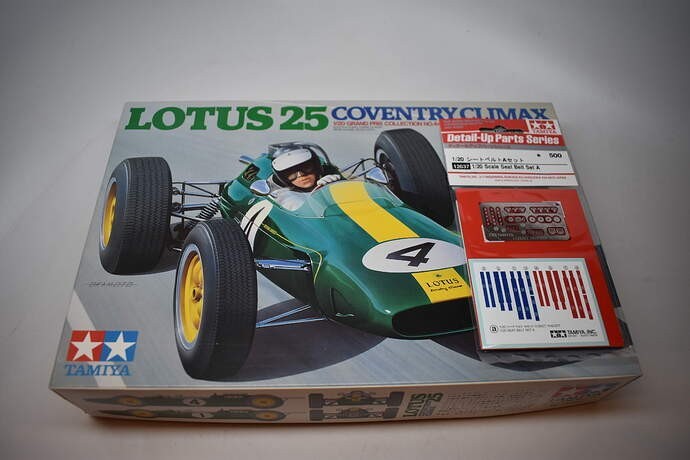
There are times that my build order gets changed out of expediency. After spending about half a year chasing down my ‘holy grail’ kit, the Ebbro Brabham BT18 Honda F-2, I found one of the few Tamiya F1 kits I never built, the Lotus 25, and my LHS at a good price. The kit was opened but complete and came from a private collection. Since both were to be painted British Racing Green, and frankly had minimal bodywork to begin with, I decided that I’d start both, paint the bodies at the same time, and proceed from there.
Well, I haven’t started them yet. But this has provided a rather unique opportunity to do in-box reviews for both kits. Let’s see what’s in the box!!
Tamiya Lotus 25 Coventry Climax
Released in 1997, this rather diminutive kit of the Lotus 25 was an instant classic. In 1963, the real car driven by Jim Clark won 7 of 10 F1 races. Despite this being a 1963 model, it was one of the first monocoque cars, and was powered by a small V8 engine.
The kit is comprised of two full sized sprues, two half sized sprues, plus a small clear sprue and four gorgeous tampo printed tires.
The assembly starts with the monocoque. Be careful painting, as not all the parts on the green sprue should be green, and a couple of gray parts should be green!!
Assembly is pretty straighforward. Compared to the BT18, the pedals are a one piece assembly with no linkage, and the master cylinders are molded in the forward bulkhead. The instrument panel has separate decals for the instruments (my hole punch will be put to work once again!). The engine assembly is pretty straighforward, but the 180 degree headers are unique and are replicated with a variety of pieces that will require careful assembly but will look great when done. Some touchup painting is to be expected.
Two shortcomings match the Ebbro kit, and that is the lack of seat belts (the Tamiya A detail pack will overcome this) and the fact the more prominent mesh over the intakes is molded in clear plastic, which will take some serious work to make acceptable. The decals look great with very bright yellow ink for the prominent Lotus trim markings
Overall, the level of detail here is several steps below the Brabham, which is not to say that it is poor. Along with the legendary Tamiya fit, it should be a fun build and look great when complete. However, it will need some massaging to bring the build to the next level.
Score: 80%
Pros: Good engineering, especially for the exhaust system, decent level of detail and a great subject matter.
Cons: No seat belts, clear plastic ‘mesh’, level of detail not quite up to Tamiya standards.
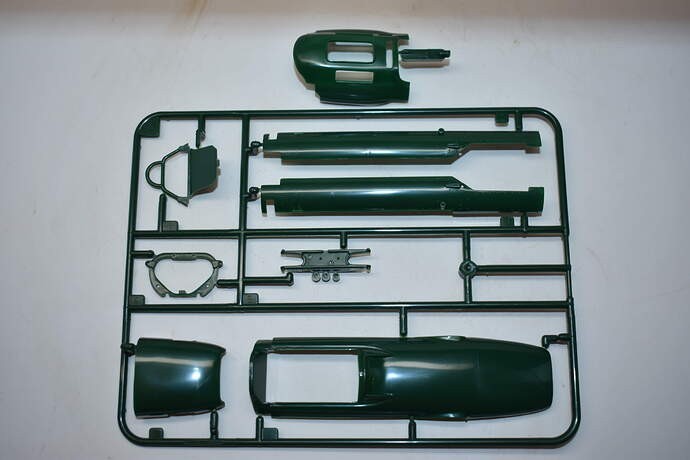

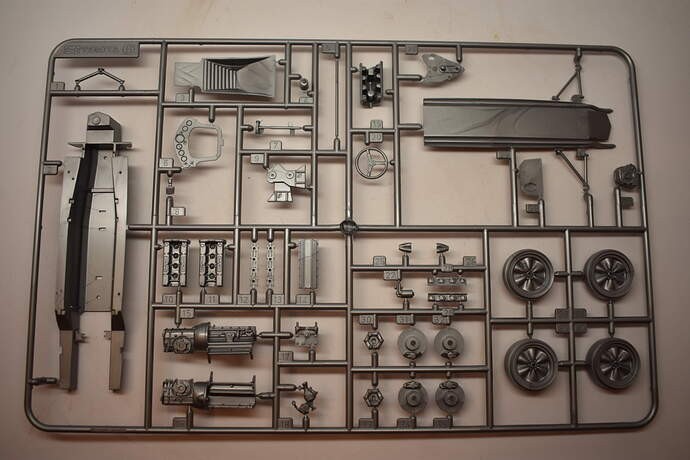

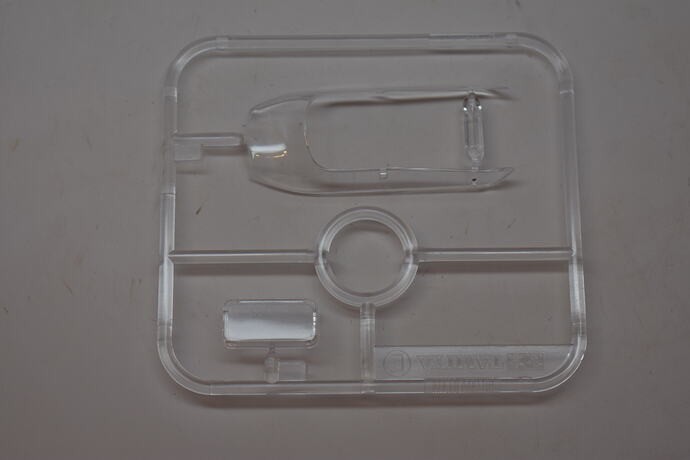

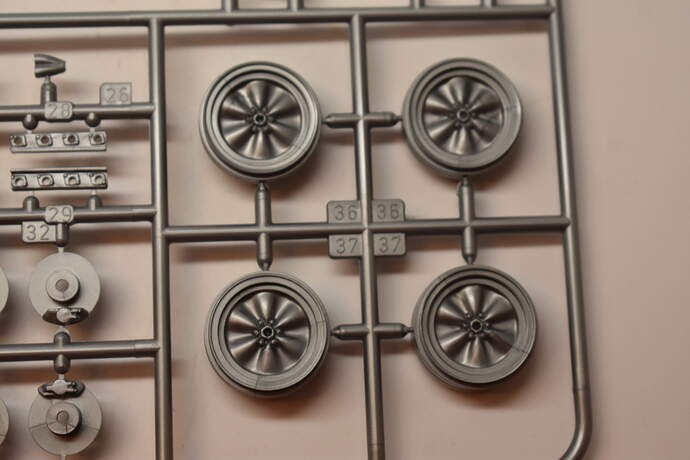
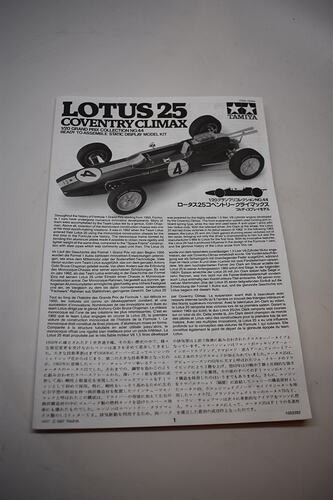

Please remember, when contacting retailers or manufacturers, to mention that you saw their products highlighted here - on AUTO MODELER.




























